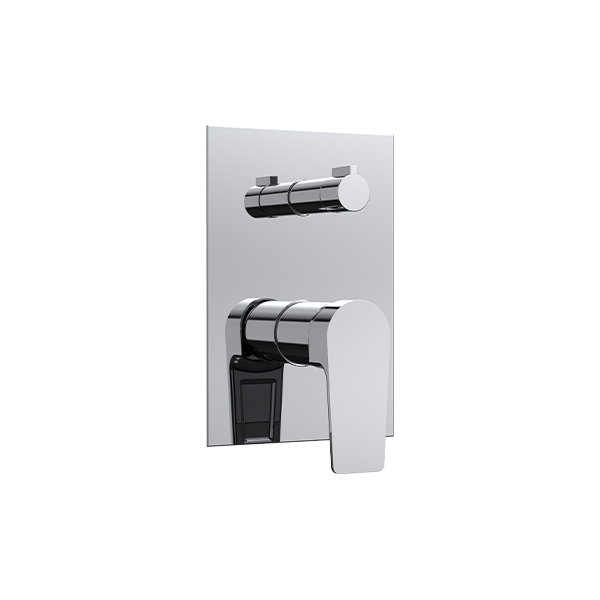Built-in hygienic mixer taps are essential fixtures in environments where cleanliness and water safety are paramount. These taps are widely used in healthcare facilities, laboratories, food processing plants, and other places requiring strict hygiene standards. The material composition of these taps plays a crucial role in ensuring their durability, corrosion resistance, and compliance with health regulations.

Built-in hygienic mixer taps must withstand frequent cleaning with harsh chemicals, resist microbial growth, and avoid contaminating the water supply. Therefore, the materials used in their construction must offer corrosion resistance, mechanical strength, and biocompatibility. Proper material selection reduces maintenance needs, prevents leaks, and extends product lifespan, all while ensuring user safety.
A built-in hygienic mixer tap consists of several key parts, each made from materials chosen for specific functional and hygienic properties.
1. Tap Body
The tap body forms the main structure and houses the internal components.
Material: The tap body is typically made from high-grade brass or stainless steel.
Brass: Lead-free brass alloys are preferred to comply with drinking water regulations. The alloy usually consists of copper (around 60-70%), zinc (approximately 30-40%), and small amounts of other elements like tin or nickel for added strength and corrosion resistance.
Stainless Steel: Grades such as 304 or 316 stainless steel are common for their corrosion resistance, especially in environments exposed to aggressive cleaning agents or moisture. Stainless steel is also favored for its smooth surface, which inhibits bacterial adhesion.
The choice between brass and stainless steel depends on application requirements and regulatory standards.
2. Internal Cartridge
The cartridge controls water mixing and flow.
Material: Ceramic discs housed in plastic or metal cartridges are standard.
Ceramic: The discs are made from high-strength ceramic materials, valued for their wear resistance and smooth operation.
Housing: The cartridge casing can be constructed from durable plastics like POM (polyoxymethylene) or metal alloys that resist corrosion and mechanical stress.
Ceramic cartridges ensure precise temperature control and long-term reliability.
3. Seals and Gaskets
Seals prevent leaks and contamination between components.
Material: Seals and gaskets are usually made from elastomers such as EPDM (ethylene propylene diene monomer), NBR (nitrile rubber), or silicone.
Properties: These materials are resistant to heat, chemicals, and microbial growth, ensuring a tight seal even under frequent cleaning and temperature variations.
Choosing the right seal materials is vital for maintaining hygiene and durability.
4. Surface Finishes
Surface treatments enhance the hygienic properties of the tap.
Chrome Plating: Many brass bodies are chrome-plated to provide a smooth, easy-to-clean surface that resists corrosion and scratches.
Polishing: Stainless steel taps often undergo electropolishing, which removes microscopic surface roughness, reducing bacterial adhesion and facilitating cleaning.
Coatings: Some taps feature antibacterial coatings that further inhibit microbial growth.
Proper surface finishing contributes significantly to hygiene and aesthetic appeal.
Compliance with Hygiene Standards
Materials used in built-in hygienic mixer taps must meet stringent regulations to ensure safety.
Drinking Water Safety: Lead content in brass alloys is minimized to comply with standards such as NSF/ANSI 61 or European Drinking Water Directives.
Biofilm Prevention: Smooth, non-porous surfaces made from stainless steel or chrome-plated brass reduce biofilm formation, essential for sanitary water systems.
Chemical Resistance: Materials must withstand frequent exposure to disinfectants and cleaning agents without degradation.

 English
English Español
Español русский
русский

